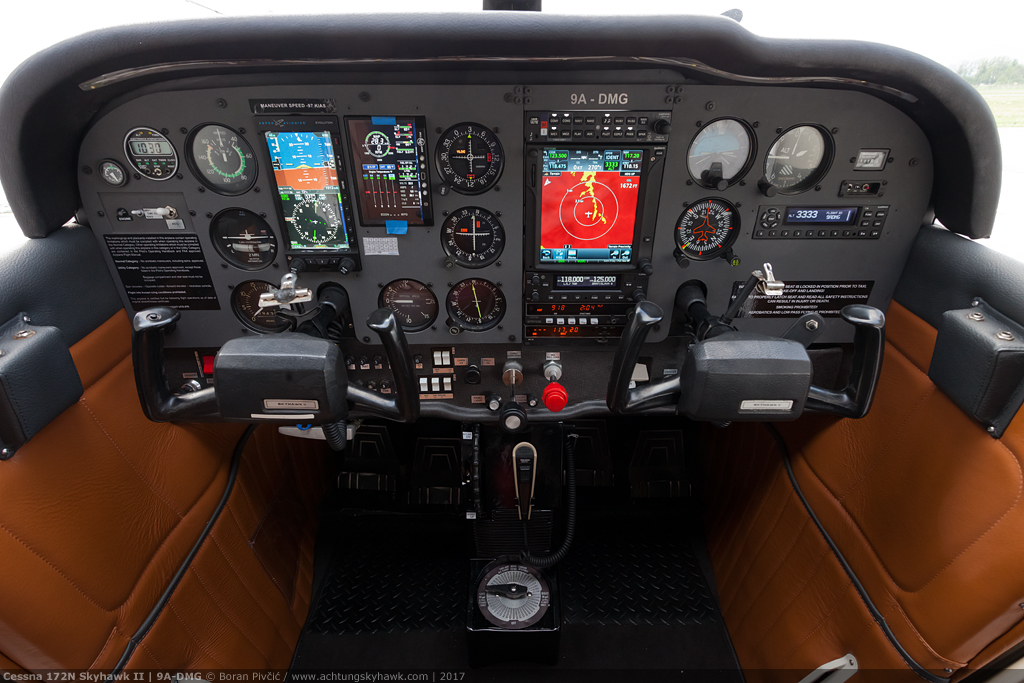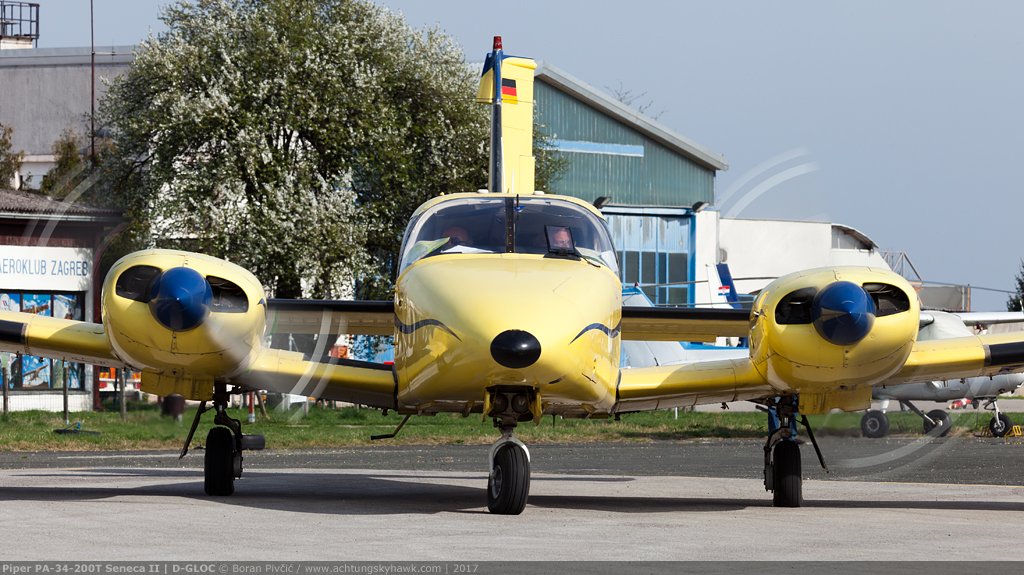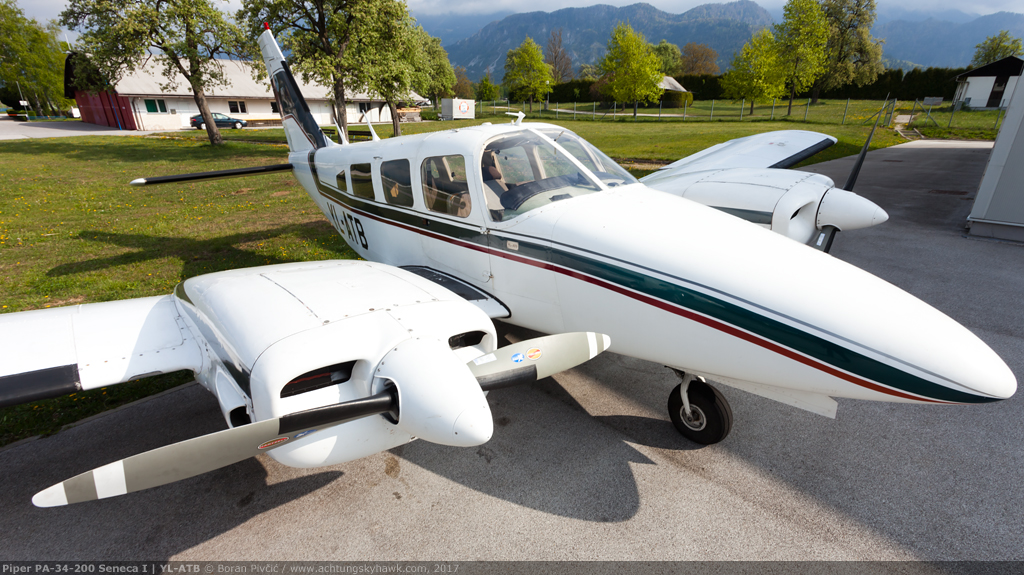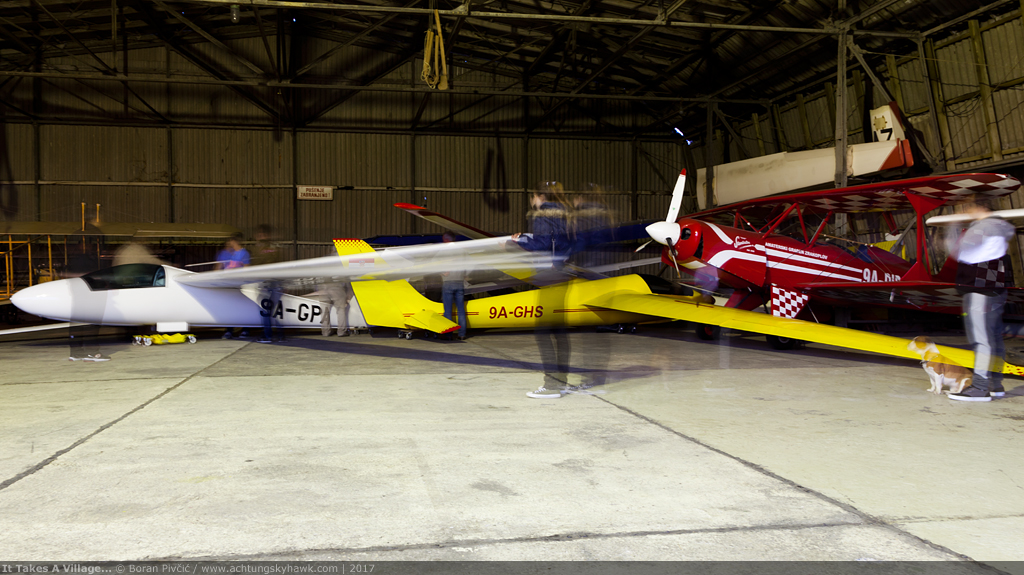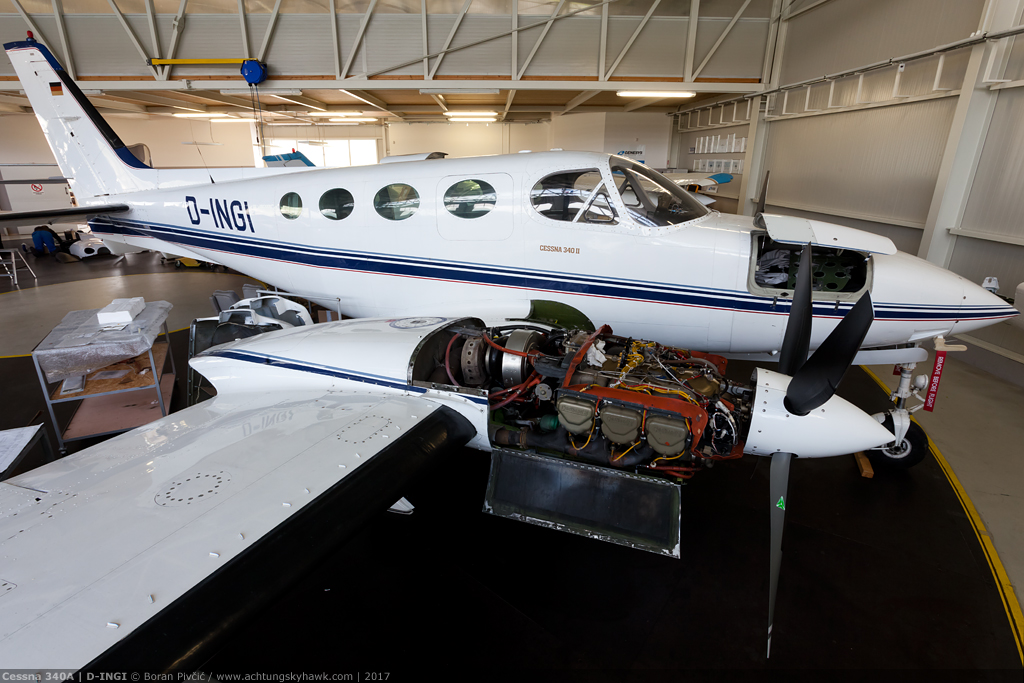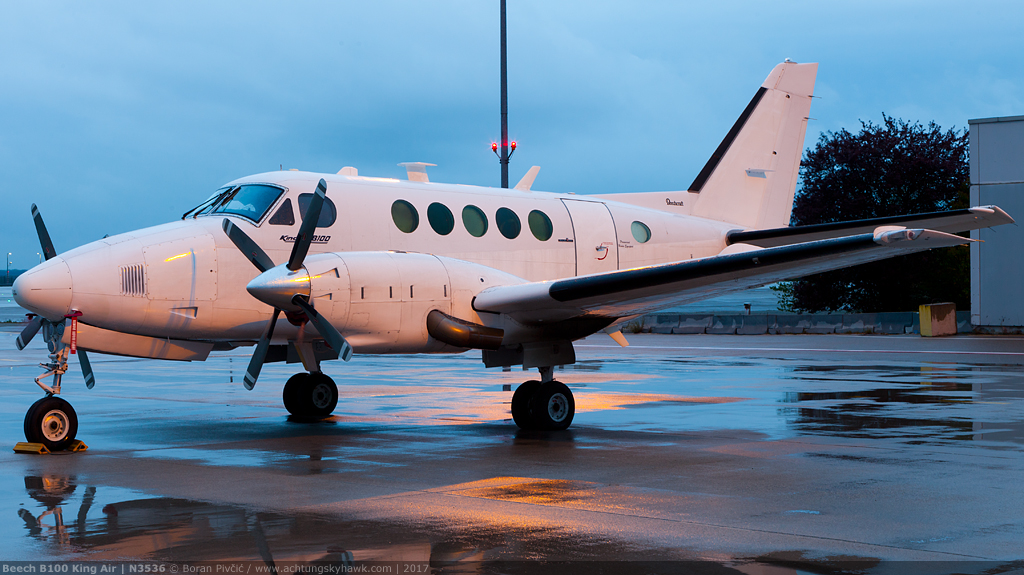By me
All photos me too, copyrighted
While I often rant here about Croatia’s summer weather – an eclectic mix of searing heat and violent thunderstorms – these past few months have seen thermometers run off their scales, with several airports reporting temperatures in excess of 40 degrees Centigrade… no small feat, since readings are taken two meters above grass and in shade. Out on the tarmac, 55+ was nothing out of the ordinary, making life out in the open particularly unpleasant.
Thankfully though, the heat and humidity had not deterred the brave men and women of general aviation from their passion, with the region’s airports chocked full of everything from cheap-and-cheerful ultralights to high-flying, million+ Euro turbine singles. So having already come to terms that my summer would consist of flying from one oven to another, I’d decided to make the best of it and see what’s on offer on the country’s GA aprons… 🙂

Whenever I’m in a rut for not having snapped a light aircraft in awhile, I can always count on Dubrovnik Airport (DBV/LDDU) to come to the rescue! Even though both GA aprons had on this day been overflowing with various private and business aircraft, G-UAVA was the one that had instantly caught my eye – if anything for being one of the very few Twin Comanches still flying in Europe. Born in the early 60s, the PA-30 was an extensive twin-engine conversion of the earlier PA-24 Comanche, a “heavy cruiser” that had been the top of Piper’s single-engine offering all the way until the late 70s and the appearance of the PA-46 Malibu. Even though it is far from the most elegant twin out there, the Twin Comanche nevertheless has several aces up its sleeve – the biggest of which is a design penned by the legendary Ed Swearingen, a freelance engineer known for his passionate love of speed and low fuel consumption. Most famous as the father of the Merlin bizprop and Metro feederliner, Swearingen had used all of his talent in designing the PA-30, creating a 300 km/h aircraft powered by engines of only 160 HP that together drank just 17 USG per hour. While they do not sound like something to write home about, these numbers are identical to what the SINGLE engine Cessna 210N could manage on its 310 HP – and all the more amazing given the extra drag and weight penalties of the second engine. G-UAVA itself had been manufactured in 1967, and can additionally boast so called “turbonormalized” engines, a special variant of the classic turbocharged setup running at lower manifold pressures and cylinder temperatures – thus increasing engine life and durability with very little loss in performance. Another interesting detail is the slope of the apron and runway; my camera’s internal balance had said that this shot is perfectly level! Built on an undulating plain that is the only suitable piece of flat land for dozens of miles around, the airport is well known for its “uneven nature”, which can cause problems if you’re not prepared for it.

After Dubrovnik had served up its best offer, Split (SPU/LDSP) had also decided to deliver! Cessna’s first post-war twin, the 310 had remained in continuous production for 26 years, and spawned such a number of versions that they ate up half the alphabet. The Q model pictured here was the type’s last snub-nosed variant, with the subsequent 310R – the last series to go into production – receiving an elongated and aesthetically far more pleasing job that had included a lot of additional storage capacity. A fine example of a classic 70s Cessna paint scheme – proudly advertising the fact that the engines sport a fuel injection system and not the common man’s carburetor – D-IBMM had been manufactured in 1973, and can still be seen happily flying all over middle and southeastern Europe.

A cute little canary coming in to make an already fun day of flying and photography at Split Airport (SPU/LDSP) all the better. A pretty rare bird, the Do-328JET is – as it says on the tin – a turbofan variant of the 33-seat Do-328 turboprop, a sleek and sexy design that can still today be seen flying with smaller regional operators in and around the Alps. Even though it had always been a well designed, robust and quality product, the Do-328JET had one fatal flaw: it was the brainchild of two small companies (Fairchild and Dornier) that went head-to-head with the likes of the much more established ERJ-135 and CRJ-100/200 in a market that does not easily forgive design missteps. Dornier’s wobbly financials had further deepened the hole being dug under the design, the result of which are only 83 examples of the type ever made. Today however, it is enjoying a small Renaissance as a business jet – as well as a speedy and capable utility aircraft for both civilian (such as ADAC) and military operators (including the USAF).
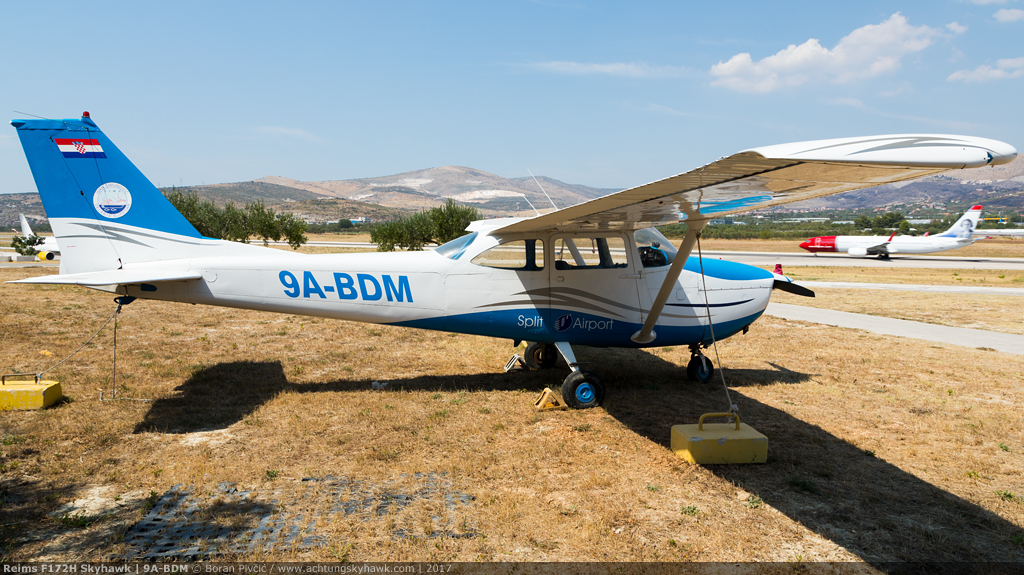
The second oldest airworthy Skyhawk in Croatia – manufactured in 1966 – observing proceedings at Split (SPU/LDSP) from its elevated position halfway up the airport’s famous hill. Located just a 100 or so meters from RWY 23, the hill tops out at just 10 meters above the airport elevation, and in addition to a GA hangar and fuel farm features an olive garden – as well as a small church that predates the airport by a couple hundred years… not a bad feature to have INSIDE the airport fence! BDM itself is similarly native, having flown in country ever since the early 70s and the first of the Yugoslav government’s aeronautical shopping sprees (intended to equip flying clubs and schools with modern Western machinery). As an H model – Reims-built no less – it still sports the Skyhawk’s original six-cylinder O-300 engine developing 145 HP, quite a more charismatic (if inefficient) package than the modern fuel-injected four-pop IO-360.

Enjoying a bit of sun and fresh sea air on Croatia’s highest – and most challenging – airport. Perched on a high plateau surrounded by hills near the top of the eponymous island, Brač Airport (BWK/LDSB) sports a cocktail of characteristics that requires you to be very much awake on landing, including a 1750 ft elevation, a 1.4% runway gradient (1.7% in places even), notorious rotors and turbulence on all approaches, summer temperatures well above 30 degrees Centigrade – and a tight 1600 by 30 meter runway that often gives bother to business turboprops and jets, let alone the occasional airliner. On this day however, the stars of the show were the lighties, here a typical “summer holiday mix” of aircraft from Hungary, Romania, Germany and Slovenia. Type-wise, there was a lot to choose from as well, with just this lineup boasting one of the more powerful Morane variants, the Mudry CAP-232 aerobatic single-seater… as well as six-cylinder Mooney and a mint Skyhawk that – despite being 35 years old – looks like it had just rolled of the production line.

Taking a quick stroll through Varaždin’s (LDVA) small corrosion corner. Already disused and mostly abandoned prior to having been flipped over in a storm in 2012, CDZ is one of Croatia’s oldest Skyhawks, manufactured way back in 1967. Unfortunately, despite quite a bit of history in its logbooks, this is as far as it will ever get, since repairing it would actually cost more than buying an airworthy late 70s/early 80s example. Indeed, the extensive buckling down the tail (evident on both sides) is a telltale sign of major structural failure in the underlying load-bearing frame, requiring the whole back end of the airplane to be replaced at the very least. Though it had, damage-wise, fared much better, the country’s sole PA-28-235 hiding in the background – and registered, rather ominously, 9A-DIE – is pretty much in the same boat. Completed in 1965, it too had not seen much air these past few years, and looks to be another candidate for a “Coke bottle conversion”…

Just when I thought I’d used up all of my luck for finding rare piston singles, I stumble upon this magnificent Sierra at little old Lučko. Fairly atypical by the standards of the company, the Sport/Musketeer/Sierra family was Beech’s attempt at replicating the success of Piper’s legendary PA-28 Cherokee series. Standing at the top of the lineup, the 24 Sierra was essentially a 200 HP Musketeer with retractable gear that had hoped to take on the extremely popular PA-28R Arrow. Sadly though, none of these models had managed to make a significant impact on the market, partly because they were made to Beech standards – and therefore more expensive – and partly because this segment of the market had never really been the company’s forte. But more on the 24 in a separate post!

Though we had already met before several years ago, it is nevertheless always nice to see this old trooper once again. One of the very few early 206s still flying in Europe, HA-CPA celebrates its 50th birthday this year, a fact that had not – in true utility Cessna tradition – prevented it from working hard well into old age. Many moons ago actually a resident of Croatia, CPA had on this day popped into Lučko for a state skydive championship, for which it was the sole official dropship. An interesting detail is the pronounced chin under the nose, a leftover from the early Cessna 210 on which the 206 is based that had housed the 210’s nose wheel when retracted (a bit more info available here).

In common with many Cessna models of the 60s, CPA’s flight deck is, by modern standards, a jumbled mess – but it nevertheless does have a certain odd charm. Interesting details are the flap position indicator (partially obscured by the right yoke) with color-coded fields representing maximum flap extension speed – and a Soviet EGT gauge below the CDI, apparently salvaged and reused from a light transport twin (possibly even the An-14).

Taking a short breather on Croatia’s sole truly private airstrip. Nestled in rolling terrain 20-odd kilometers south of Zagreb, Pisarovina Airfield counts among the more scenic places to land at in the area, ringed by dense woodland and the Vukomerić Hills to the north, vast arable fields and fisheries to the south – and airliners on approach to Zagreb Airport (ZAG/LDZA) above. Indeed, the airfield is within spitting distance from both ZAG’s control zone and the Pisarovina NDB – the focal point for all approaches to RWY 05 – making getting in and out quite a fun and refreshing experience. Though several aircraft – and even a flight school – are based here, on this day we were the only plane in town, which made us feel a bit… conspicuous…
A short & sweet additional feature to accompany the photo above: a “dash cam” video of the approach to and landing on Pisarovina’s RWY 04… a fair bit of thermal turbulence that day, but what can you do (also, the camera shake on landing is exaggerated – the runway is relatively smooth, but the camera was mounted on a suction mount on the windscreen, which is flexible and tends to wobble about with every bump).


